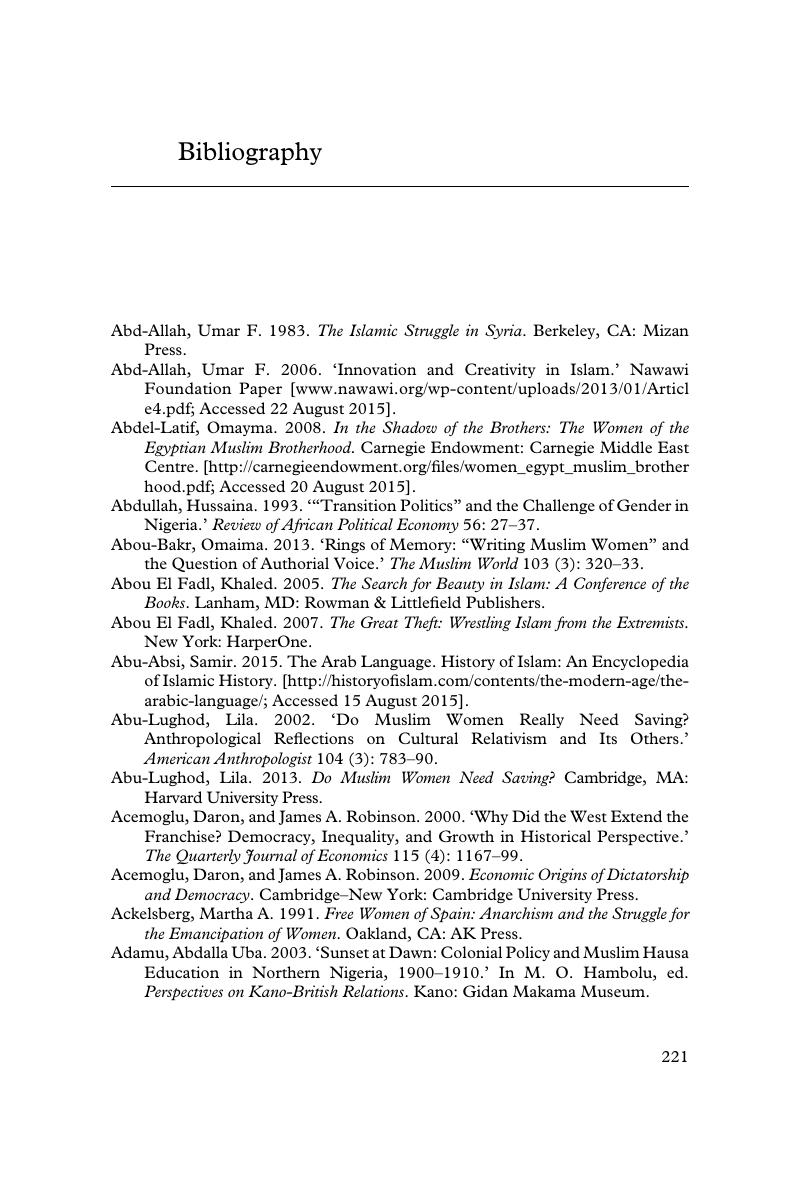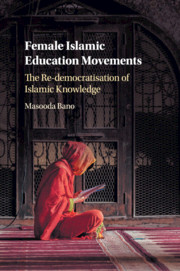Book contents
- Female Islamic Education Movements
- Reviews
- Female Islamic Education Movements
- Copyright page
- Dedication
- Contents
- Preface
- A Note on Transliteration
- Glossary
- 1 Understanding Knowledge Creation: A Re-Reading of Female Islamic Education Movements
- Part I The Power of Dispersed Knowledge
- Part II Incentivising the Mixing of Knowledge
- Part III Conclusion
- Bibliography
- Index
- References
Bibliography
Published online by Cambridge University Press: 29 September 2017
- Female Islamic Education Movements
- Reviews
- Female Islamic Education Movements
- Copyright page
- Dedication
- Contents
- Preface
- A Note on Transliteration
- Glossary
- 1 Understanding Knowledge Creation: A Re-Reading of Female Islamic Education Movements
- Part I The Power of Dispersed Knowledge
- Part II Incentivising the Mixing of Knowledge
- Part III Conclusion
- Bibliography
- Index
- References
Summary

- Type
- Chapter
- Information
- Female Islamic Education MovementsThe Re-Democratisation of Islamic Knowledge, pp. 203 - 220Publisher: Cambridge University PressPrint publication year: 2017



